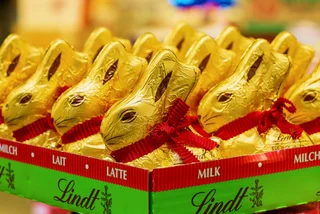Hit the slopes
From cross-country to downhill Czechs are a nation of skiers. And given the number of scenic slopes (roughly 300) and resorts, finding a spot to do so isn't a big challenge. Many Czechs even incorporate a ski trip into their Christmas/New Year's Eve celebrations, booking a stay at a mountain cottage months in advance. More on that tradition here.
Given the current rainy weather, however, conditions for skiers aren't ideal. As ski resorts throughout the country are preparing for the upcoming Christmas and New Year celebrations (the peak of the season) some slopes will not open until after Christmas Day.
During the Christmas holidays, skiing will take place on more than 45 kilometers of downhill tracks in the Krkonoše Mountains, the Eagle Mountains, and in some foothill areas. Rokytnice nad Jizerou in the Krkonoše Mountains will not be in operation until Dec. 26; areas of Central Bohemia have enough manmade snow to operate, reports ČTK.
Plan a winter wonderland walk
When most people think of winter activities in the Czech Republic, they think of skiing, snowboarding, ice skating, and other snow-coated sports. But the Czech Republic is gifted with a dense network of hiking trails that are just as beautiful in winter as they are in the warmer seasons. Read our tips for winter hiking here.
Get sledding (eventually)
While rain may have washed away Prague's cover of white, if by some Christmas miracle the capital has enough snow for sledding, you should know the ins and outs of toboggan travel. The city of Prague notes that in historically valuable city parks such as Petřín, Stromovka, and Letenské sady, a special place is reserved for sledding and bobsledding due to protections in place for certain greenery.
Outside of the city center, Divoká Šárka, Hostivař Forest Park, and Kunratice Forest are ideal for winter sports and, in the current conditions, a brisk winter walk. You can read more tips for sledding spots here.
Raise a cup of svařák
The first batch of what we call today mulled wine was likely created by the ancient Romans who would eventually bring it to Europe; the spice-kissed winter beverage first appeared in English in a 14th-century cookbook called "The Forme of Cury."

The original recipe hasn't changed much since then, and whether you order a mulled wine, glühwein, glögg, or svařák (also svařené víno) you will typically be served red wine simmered with cinnamon (skořice) and cloves (hřebíček) and served hot.
In Czech svařit means to boil. Svařák refers to boiled or rather "decocted" wine that is boiled to extract spices. During the communist era making mulled wine this way also meant "correcting" low-quality wine with sugar and spices to mask its imperfections. In Czech, svařit also means to weld metal together so technically if you wanted to give svařák a fun English cocktail name might call it "a welder" (svářeč/svářečka).
Skate through the holiday season
Outdoor ice skating rinks opened across Prague in late November/early December. Most offer skate rental and refreshments, and can even sharpen your skates. Several of them offer free admission and just require visitors to pay for skate rentals.

If you'd like to skate during the Christmas holidays, you're in luck: several rinks are open across the capital including Čapadlo ice rink on the Prague embankment, the rink at Vypich, and at the ice rink at Letná. Admission is free and skates can be rented for a fee. Most skating rinks don't close until the end of February. See our guide to skating in Prague here.
Take a polar plunge
Swimming in freezing rivers and ponds over the Christmas season has a longstanding tradition throughout Europe. Here in the Czech Republic, the century-old custom gained popularity during Covid restrictions driving a new generation of Czechs into icy waters in Prague and beyond.
Perhaps the best-known local swim is the Alfred Nikodém Memorial which takes place annually on Boxing Day, Dec. 26, and sees cold-water swimmers known as “hardeners” (otužilci in Czech) plunge into the Vltava. This year is no exception and the brave bathers will take to the chilly waters of the Vltava for the 76th annual event.
While organized events of winter swimming go back about a century in Prague, they have long been a staple in Eastern Europe and Russia, where Orthodox Christianity is practiced. Swimming takes place on the day of the Epiphany, which is Jan. 19 in Russia and Jan. 6 in countries that follow the Western calendar.
Note that not anyone can participate in official swims: Those who aren’t members of the First Prague Swimming Club of Hardeners (I. plavecký klub otužilců Praha) will need a health certificate and must prove their fitness with a recent video of them swimming.
Enjoy an ice cream
Honza Hochsteiger, owner and master ice cream maker at Crème de la Crème Prague confirms the Czech love of eating ice cream all year round. He says the benefits of eating ice cream when it's cold outside aren't just that it doesn't melt. In addition to avoiding long lines at the ice cream parlor, Hochsteiger says that a world of imaginative flavors opens up during the holidays.
"The best flavors for the cold months are chocolate, hazelnut, cinnamon, masala chai, or Christmas chestnut. If it is prepared from premium candied chestnuts, it is truly fabulous," he says.
Explore Prague's winter ice cream offerings with our Complete Ice Guide to Czech Ice Cream with Prague Ice Cream Map.












 Reading time: 4 minutes
Reading time: 4 minutes 




































